 |
| Gallery of Houk Group Journal Covers |
 |
 |
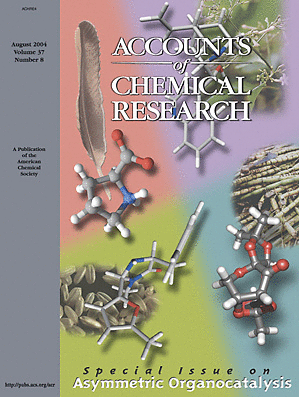
|
 |
| Four of the prominent organocatalysts described in this issue superimposed over
the natural sources of the chiral compounds or precursors. Clockwise from the top
left are proline and a chicken feather, cinchonidine and the cinchona flower, Shi's
fructose-based catalyst and sugar cane, and a MacMillan organocatalyst and rice
hulls (a source of phenylalanine) (DOI: 10.1021/ar0300524). Rice photograph by
John Mullen. Cover concept and design by Ruth Gordillo and Amy Meyer Phifer. |
 |
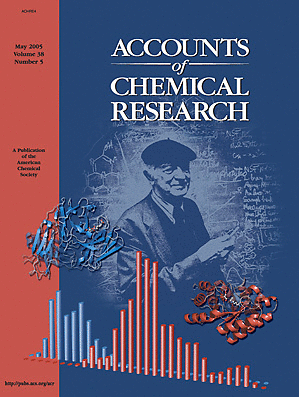
|
 |
| Linus Pauling, Nobel Laureate of both Chemistry and Peace, shown behind an
antigen-antibody complex (blue) and an enzyme-transition-state complex (red).
These images were generated with PYMOL. The bar graphs show the frequencies
of occurrence of antibody-antigen complexes (red) and enzyme-transition-state
complexes (blue) versus the binding energies, which increase from left to right
(DOI: 10.1021/ar040257s). Pauling photograph Bettman/CORBIS. Cover concept
and design by K. N. Houk, Xiyun Zhang, and Amy Meyer Phifer. |
 |
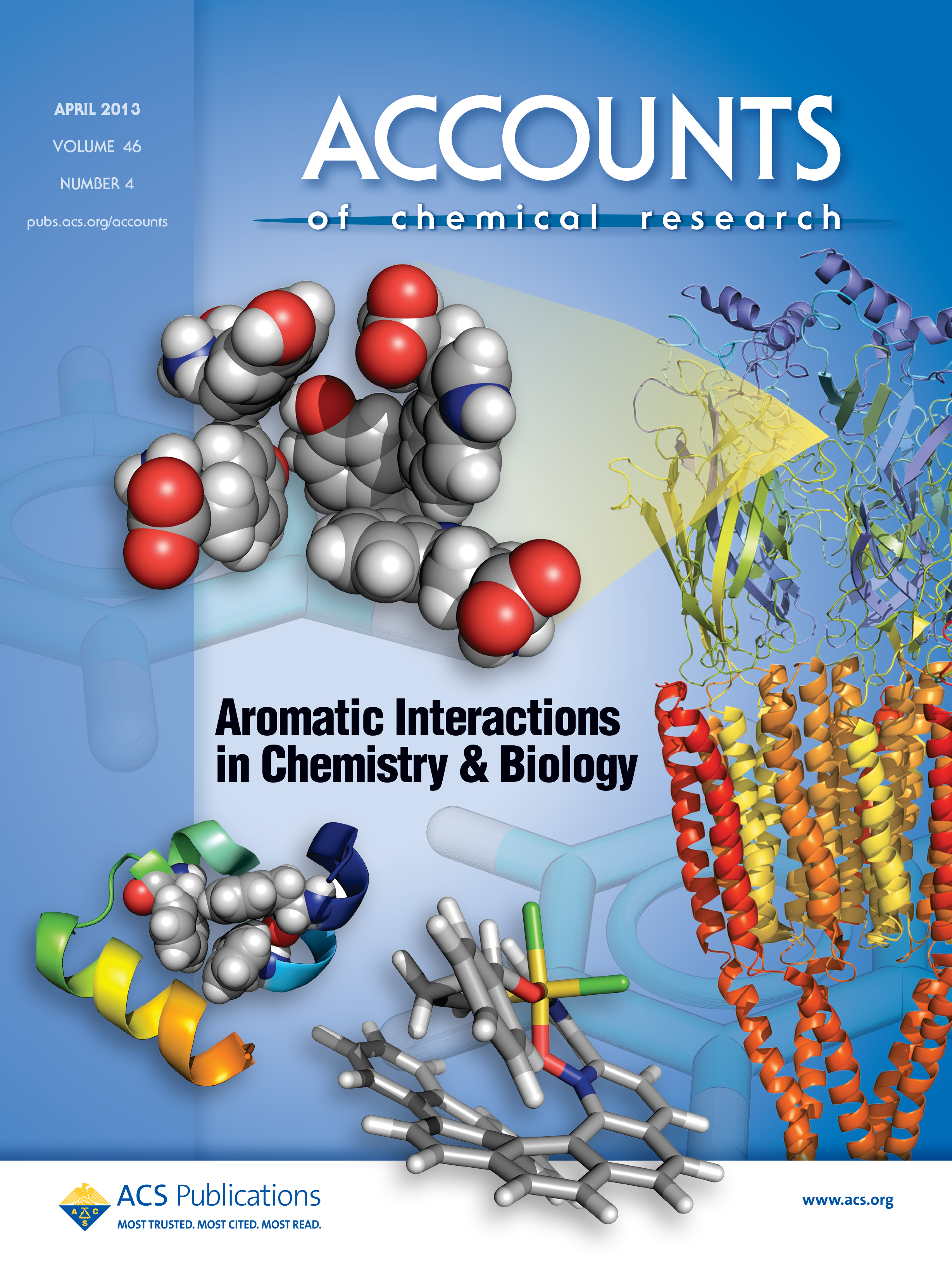
|
 |
| Aromatic Interactions are ubiquitous in chemistry and biology, playing vital roles in
phenomena ranging from protein folding and protein-ligand interactions to
organocatalysis. Unraveling the role of aromatic interactions in these systems
hinges on a firm understanding of the prototypical aromatic interaction, the stacked
benzene dimer. Cover design by Steven E. Wheeler and Amy Meyer Phifer. |
 |
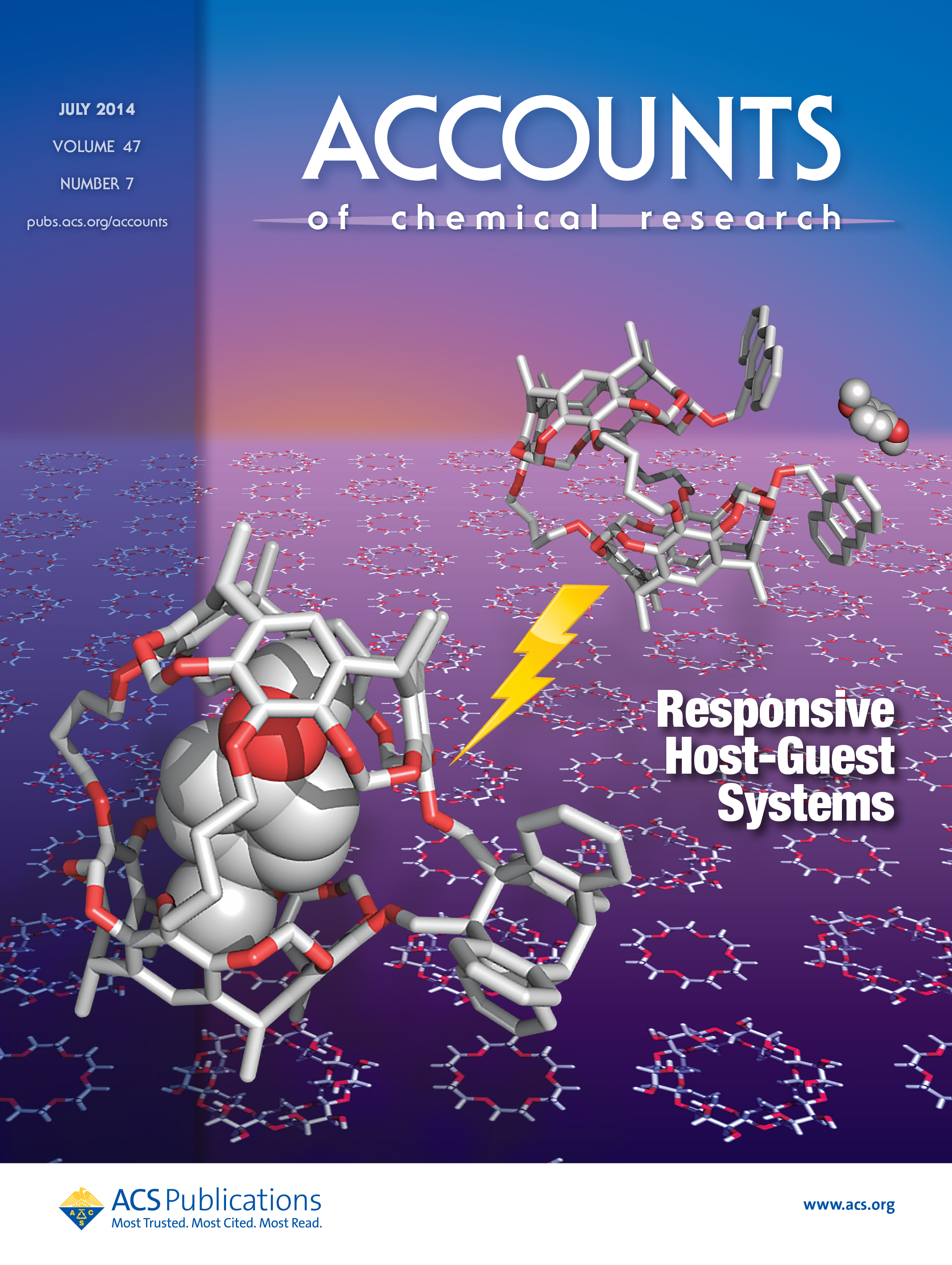
|
 |
| A carceplex that releases its guest upon ultraviolet irradiation is shown over a
matrix of crown ethers and cyclodextrins, typical hosts in host-guest chemistry.
This responsive host-guest system was synthesized by Hao Wang and is described
in Liu, Helgeson, and Houk (DOI: 10.1021/ar5001296). Cover design by Fang Liu
and K. N. Houk; layout by Amy Phifer. |
 |
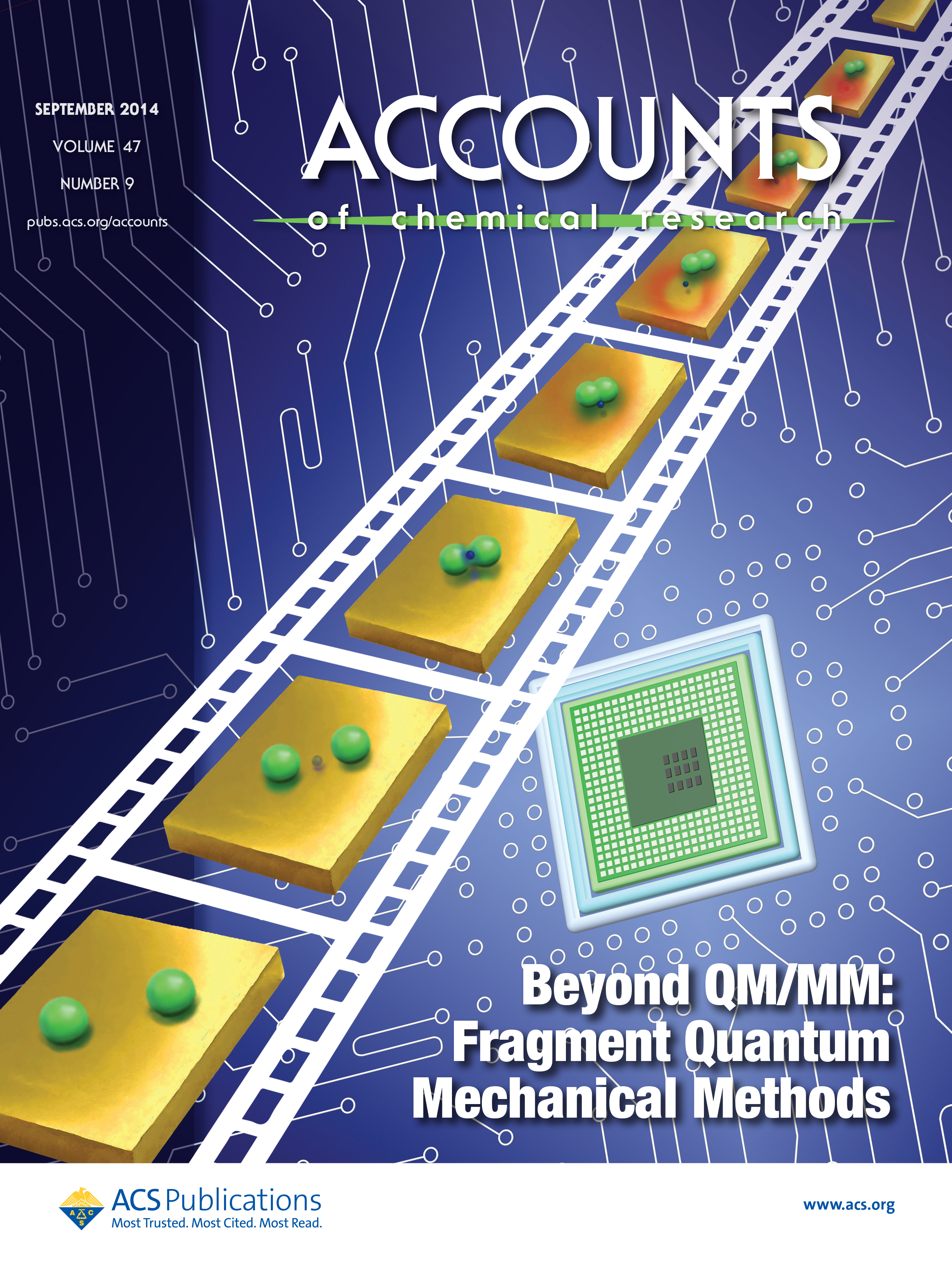
|
 |
| This special issue highlights computational methods in chemistry such as the
simulation shown in the film strip running from upper right to lower left. This is a
movie of the plasmon-assisted dissociation of hydrogen on a gold surface. H2 near
a gold nanoparticle is shown at the upper right. Laser light (red flash) aimed at gold
nanoparticles excites plasmon resonances, which in turn decay into hot electrons at
the surface of the nanoparticles. These hot electrons populate antibonding orbitals
of physisorbed molecules leading to their dissociation (lower left). See F. Libisch,
C. Huang, and E. A. Carter (DOI: 10.1021/ar500086h). Cover design by Fang Liu
and K. N. Houk, based on images by Florian Libisch; layout by Jeff Ward. |
 |
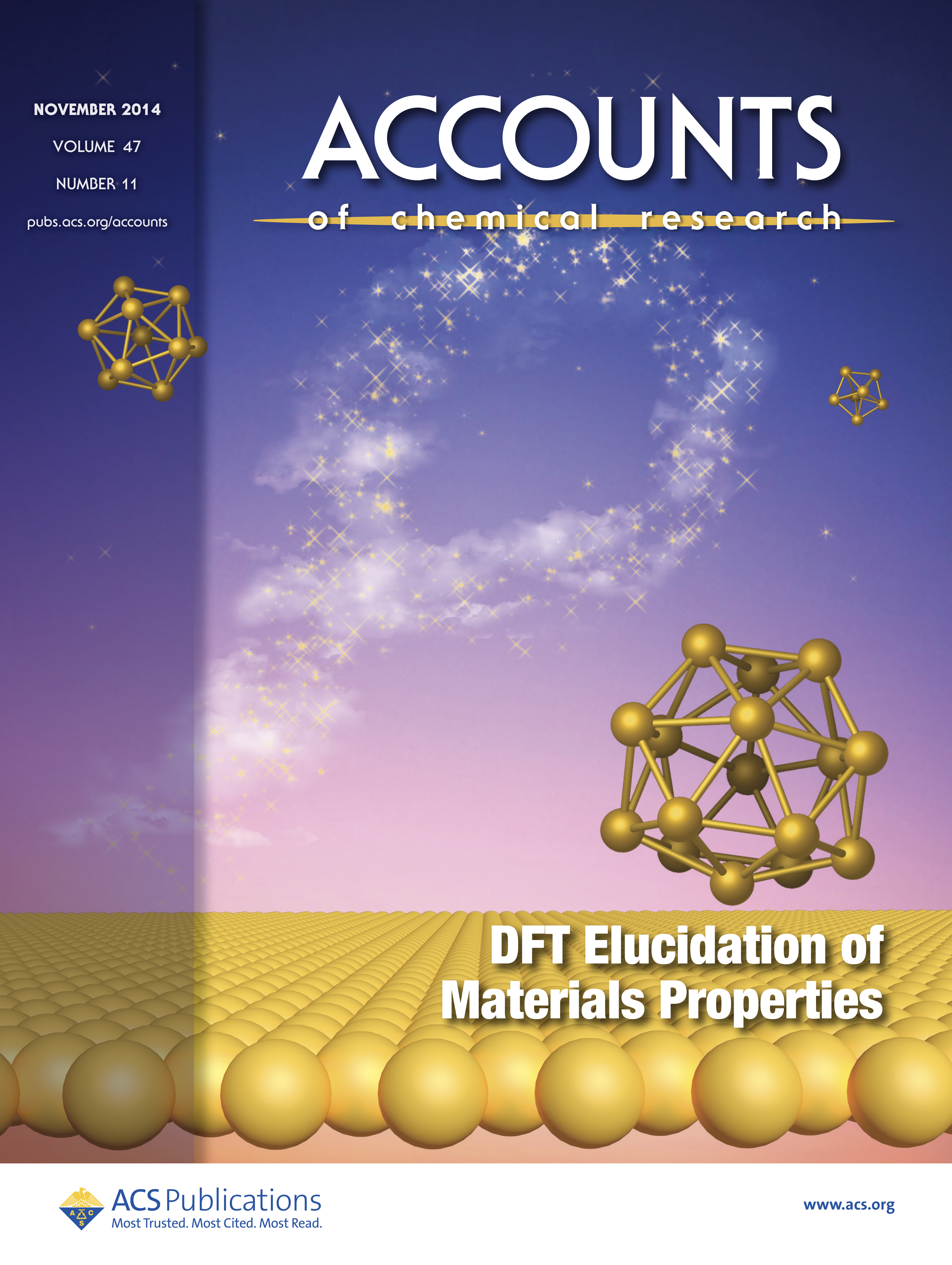
|
 |
| Metal surface and gold clusters represent some of the types of materials described
in this Special Issue on DFT Elucidation of Materials Properties. The image shows
the coalescence of gold clusters into a cloud that is shaped like the Greek letter rho.
The varying densities in different regions of the cloud represent figuratively the
basis of density functional theory (DFT). In DFT, rho is the electron density
function, and the density functional operates on rho to calculate molecular or
materials properties. Quantum chemists and physicists have devised many of these
mathematical functionals (DOI: 10.1021/ar5003889). Cover design by Fang Liu
and K. N. Houk; layout by Jeff Ward. |
 |
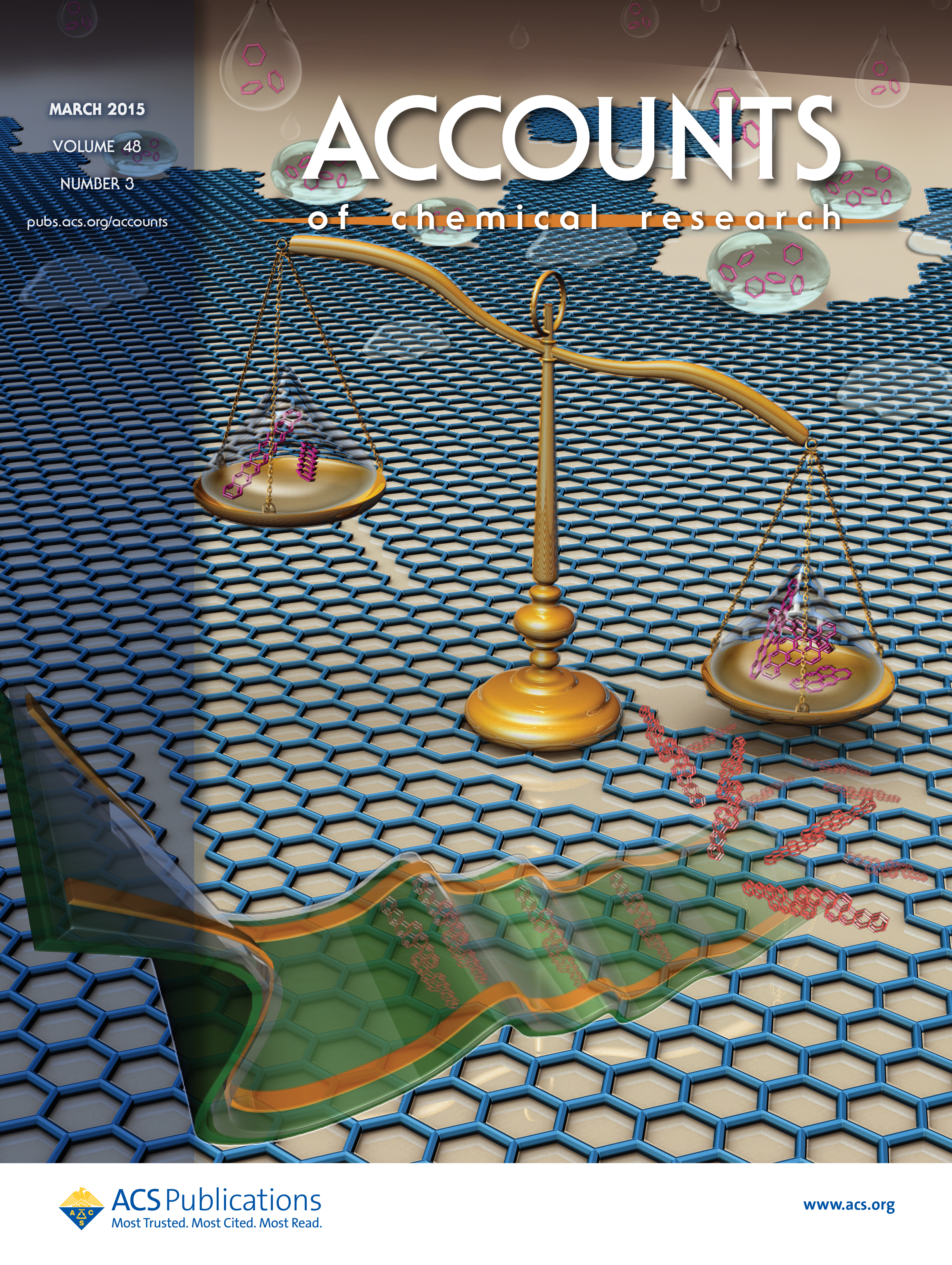
|
 |
| The 2-D angular acenes, as fragments of graphene, show much higher stability than
their linear analogues. These materials are promising small-molecule organic
semiconductors for flexible devices. See the Account by L. Zhang, Y. Cao, N. S.
Colella, Y. Liang, J-L. Bredas, K. N. Houk, and A. L. Briseno (DOI:
10.1021/ar500278w). Cover design conceived by Alejandro Briseno, Leizhang and
Fang Liu, and created by Lei Zhang; layout by Jeff Ward. |
 |
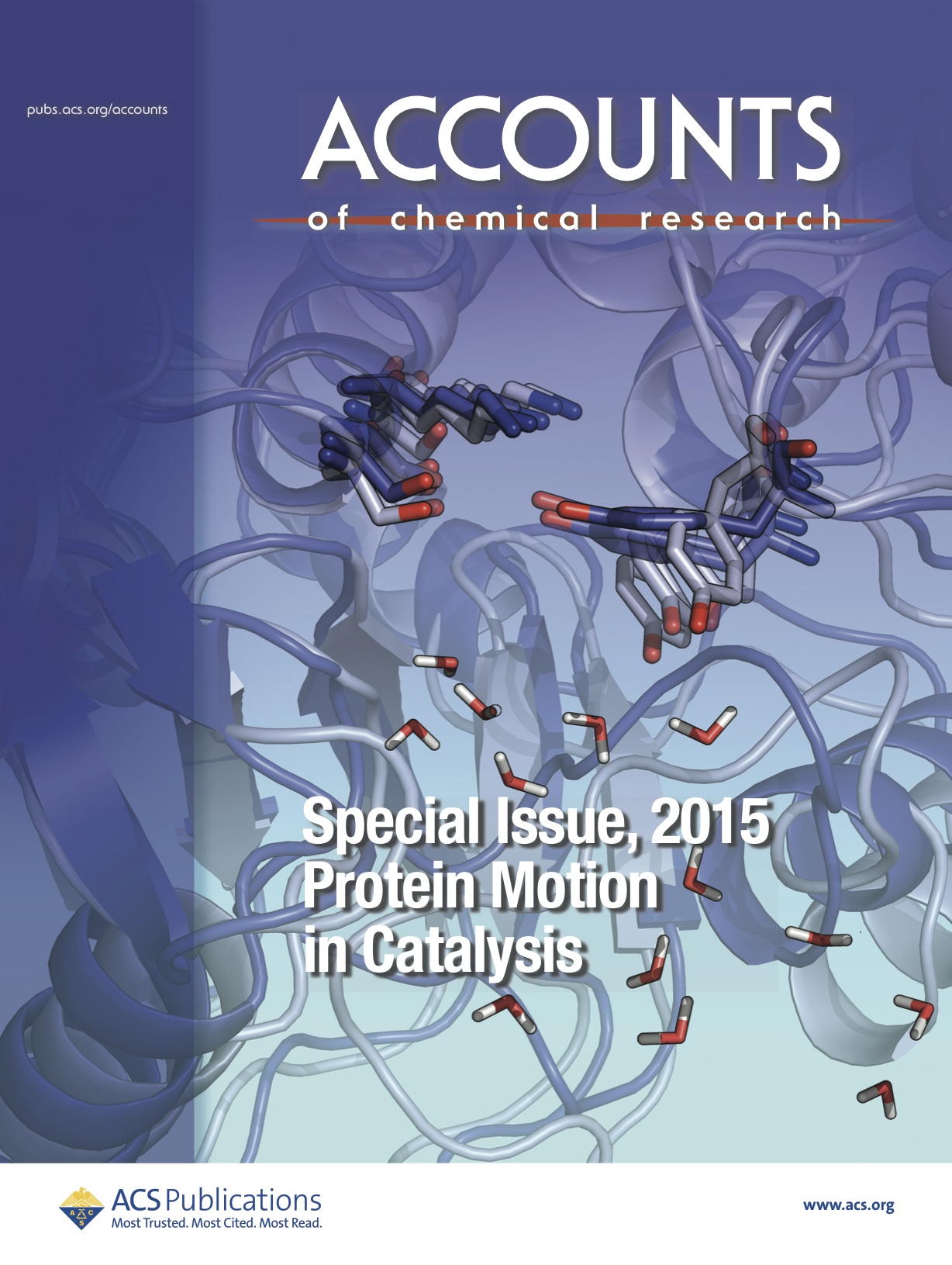
|
 |
| This special issue highlights Protein Motion in Catalysis. Cover design by
Silvia Osuna,
Gonzalo Jimenez-Oses, Elizabeth L. Noey, and K. N. Houk; layout by Jeff
Ward. |
 |
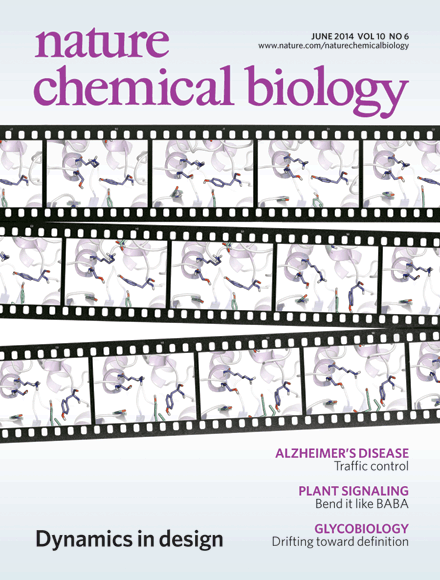
|
 |
| Protein design and engineering have typically focused on static structures to guide
selection of mutations or other changes to be made, but dynamics have increasingly
been viewed as a missing element in these approaches. Two manuscripts now
provide computational and biophysical evidence that dynamics - as captured in this
image as a film strip of protein conformations - has a major role in determining the
success or failure of a protein design project (DOI: 10.1038/nchembio.15030).
Cover art by Erin Dewalt, based on imagery from Silvia Osuna with help from
Gonzalo Jimenez-Oses and K. N. Houk. |
 |

|
 |
| The cover picture shows the transition structures for six pericyclic reactions,
provided by quantum chemical ab initio calculations, which are the subject of K. N.
Houk's review on p. 682 ff. Common to these reactions are the changes in bonding
involving six electrons. Examples are found among the most important reactions in
preparative organic chemistry including sigmatropic rearrangements,
elecrocyclizations, and the ene and Diel-Alder reactions. Calculations reveal
interesting aspects - even now 25 years after the formulation of the Woodward-
Hoffmann rules - for example, that these very different reactions have features in
common and yet a variety of transition structures. Without these postulates organic
chemistry would not have been as fruitful. Although by tradition we do not put
portraits on the front cover, this issue breaks with editorial policy because
Woodward (the right-hand photo) has become a legend and would have celebrated
his 75th birthday this year. |
 |

|
 |
| The cover picture shows a model of the binding of a protonated cyclopropane in a
cation-binding site of an antibody. The larger circle gives an enlarged view of the
actual binding of the organic intermediate. The aromatic and carboxylate groups
are yellow, the organic intermediate silver, and the carbon atoms of the protonated
cyclopropane red. The image was created with the programs Persistence of Vision
and RasMol as well as proprietary software by Dr. Nicholas C. DeMello. More on
the stabilization of cyclopropane intermediates is reported by J. K. Lee and K. N.
Houk on pages 1003 ff. |
 |

|
 |
| The di-pi-methane rearrangement of dibenzobarrelene, described with a two-step
mechanism on the triplet state, was pioneered by Howard Zimmerman (1926-
2012). In their Communication on page 13097 ff., R. A. Matute and K. N. Houk
give a novel mechanistic insight of competing one-step and two-step pathways on
the triplet surface. The picture shows a dromedary and a bactrian camel with the
transition states on their humps. |
 |
 |










